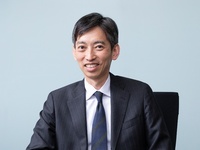ITL #537 Corporate museums: their future as a PR asset
1 year, 10 months ago
(Comments)
The role, function, and future of museums run by corporations. Masahiro Makiguchi (pictured) interviews Naoya Takayanagi.
Corporate museums are part academic and part business and occupy the grey zone in between. It is an organization that works with several departments in a company including public relations, branding, advertising, and HR.
PR Consulting Dentsu President and CEO Masahiro Makiguchi interviews Taisho University full-time lecturer Naoya Takayanagi, a specialist in research on corporate museums.
It’s not about profitability
Makiguchi: I think your research on the corporate museum is very unique. What led you to start researching this?
Takayanagi: While in university, I thought about becoming a certified museum curator. At that time, the consensus was that corporate museums alone aren’t profitable but there are things there that pull at visitor’s heart strings. Academics at the time could not explain that, so I decided to focus on this. It’s exciting trying to crack something nobody else has been able to explain.
The importance of guides
Takayanagi: The two biggest themes for corporate museums to convey are the company’s roots and the power of their industry. Well-designed museums are planned out to cover all the facets, whether it’s intended for adults or children and having attendants who guide visitors have proven effective.
Makiguchi: Roots, industry, and people.
Takayanagi: Corporate museums are packed with information on what the company values. Making money and earning profits are, of course, important but behind that is a passion to provide benefits to their customers. For example, a company that makes thermos bottles aims to keep warm drinks warm and cool drinks cool. They have an extraordinary passion for temperature control. By having a guide on hand to explain that drives the story home.
Internal communications is important, too
Takayanagi: A museum that simply showcases products has no value. What is important is to show how the products changed society and have visitors feel their impact. This is not only true externally, but also internally. The museum provides an opportunity for people in manufacturing, many of whom have few opportunities to interact with customers, to directly communicate with users and motivates them. This is probably one of the reasons why museums did not close during the covid-19 pandemic. Corporate museums connect management with employees, employees with one another, and the company with its customers.
Makiguchi: It is important that employees can see with their own eyes why the company they work for offers their products and services to society, isn’t it.
Takayanagi: Some corporate museums are located where the company originated. This shows that even if the headquarters are now in Tokyo, their roots are important to them. Many young people in rural areas set off for Tokyo. In areas where these people return to work, there are companies that have invested in museums, and they learned of the companies through the museums. In that sense, museums are paying dividends.
Museums should show everything, even the skeletons in the closet
Takayanagi: All companies have even their dark past, minor and major, that they learned from. Whether it was an accident or their product was contaminated, one of the most interesting things about corporate museums is how they face the skeletons in their closet.
Companies do not need to buy advertisements to confess incidents in their past. But what if they had done this? Or why didn’t they do that? These reflections are often the roots of corporate philosophies and activities. If advertising reaches far but shallow, public relations such as corporate museums are targeted but deeper. When the spirit embodied in a nail or cup is successfully communicated, a true fan is born.
What is “entertainment”?
Makiguchi: The studio park in Uzumasa, Kyoto is a sort of museum, isn’t it?
Takayanagi: I believe so. There are many ways to define a corporate museum. However, what’s central to museums are how interesting it can make a company or industry, how fun it can make learning about them, and how much entertainment it can entail. Eventually, that becomes part of culture.
Makiguchi: What kind of museum would you like to see in the future? Is there a museum you would like to create?
Takayanagi: I wish there was a museum that shows how a company or product fit into my life. It would be great if I went to that museum several decades later and was able to see how I used that product or if there was some sign that I was there.

The Author
Masahiro Makiguchi
Masahiro Makiguchi, President & CEO of PR Consulting Dentsu Inc., and President of the Public Relations Society of Japan. Naoya Takayanagi, Associate Professor of the Department of Regional Development of the Taisho University. A series of pieces by Dentsu on different corporate museums can be found at the website link.
mail the authorvisit the author's website
Forward, Post, Comment | #IpraITL
We are keen for our IPRA Thought Leadership essays to stimulate debate. With that objective in mind, we encourage readers to participate in and facilitate discussion. Please forward essay links to your industry contacts, post them to blogs, websites and social networking sites and above all give us your feedback via forums such as IPRA’s LinkedIn group. A new ITL essay is published on the IPRA website every week. Prospective ITL essay contributors should send a short synopsis to IPRA head of editorial content Rob Gray emailShare on Twitter Share on Facebook


Comments